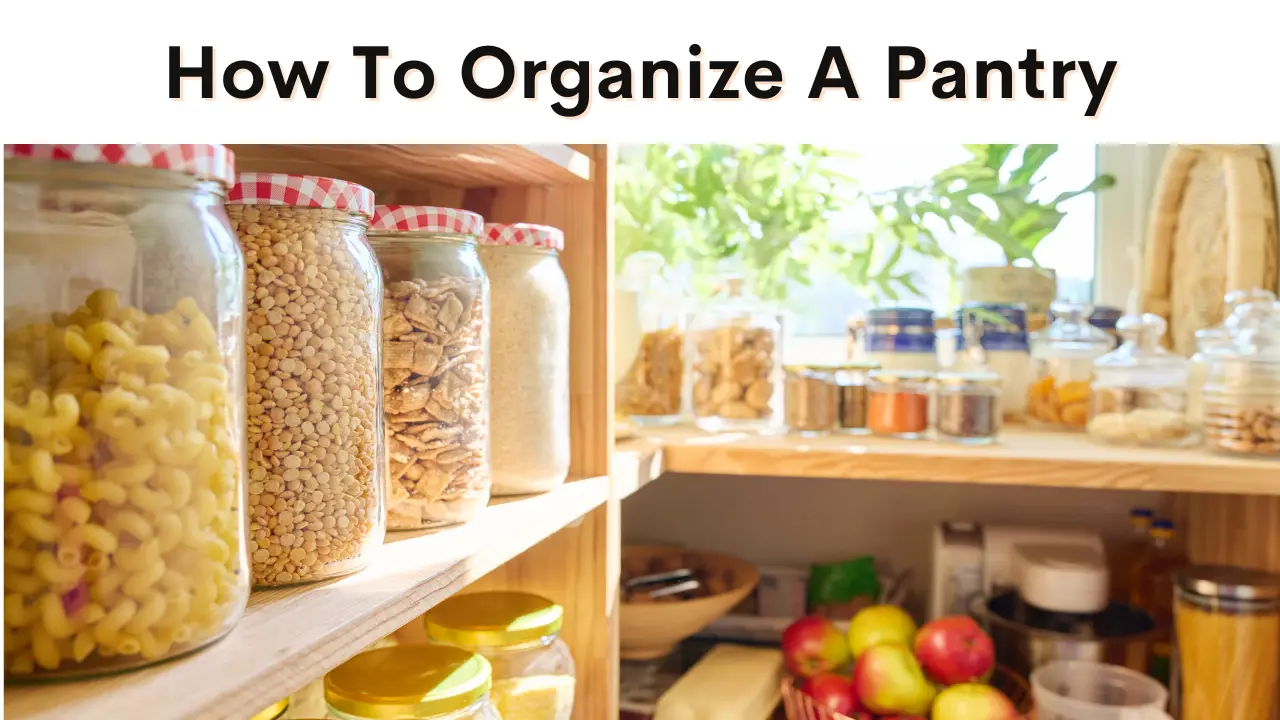Are you tired of seeing brush marks on your freshly painted cabinet doors? Well, you’re in luck! In this article, we will show you how to paint cabinet doors without those pesky brush marks.
By following a few simple steps, using the right tools and techniques, and allowing sufficient drying time, you can achieve a smooth, professional finish that will make your cabinets look brand new.
To paint cabinet doors without brush marks:
- Use high-quality paint and tools.
- Thin the paint slightly.
- Apply thin coats with long, smooth strokes.
- Work quickly and methodically.
- Consider using a paint sprayer for the smoothest finish.
Firstly, it is essential to prepare the surface properly before you even think about picking up a paintbrush. This means cleaning the doors thoroughly and sanding them to create a smooth surface for the paint to adhere to.
Next, make sure you have the right tools and techniques at your disposal. A high-quality brush or foam roller can make all the difference in achieving a smooth finish.
Additionally, using a paint additive, such as a paint conditioner or flow improver, can help to minimize brush marks and make the paint glide on more smoothly.
By following these steps and techniques, you can say goodbye to brush marks and hello to beautifully painted cabinet doors.
Key Takeaways
- Proper brushing and drying techniques are important for achieving a flawless finish on cabinet doors.
- Sanding lightly between coats helps remove imperfections and create a smooth surface for the next layer of paint.
- Choosing the right brush and brushing in the direction of the wood grain is important for a professional-looking result.
- Sufficient drying and curing time is necessary for a smooth and flawless finish.
Prepare the Surface Properly
Make sure you’re sanding the surface properly before painting the cabinet doors to ensure a smooth and flawless finish. Surface preparation is key to achieving professional-looking results without any brush marks.
Start by removing any existing paint or varnish from the cabinet doors using sandpaper or a chemical stripper, depending on the type of finish. This will create a clean and even surface for the new paint to adhere to. After removing the old finish, use fine-grit sandpaper to smooth out any imperfections or rough spots on the surface. Sanding in the direction of the wood grain will help prevent any visible scratches or marks.
Next, it’s important to pay attention to your sanding techniques. Use a sanding block or sanding sponge to maintain consistent pressure and avoid applying too much force, which can result in uneven surfaces. Be sure to sand all areas of the cabinet doors, including the edges and corners, to ensure a uniform finish.
After sanding, wipe away any dust or debris with a clean cloth or tack cloth. This will help create a clean surface for the paint to adhere to and prevent any particles from getting trapped in the paint, which can cause brush marks.
By properly preparing the surface and using the right sanding techniques, you can achieve a flawless finish on your cabinet doors without any brush marks.
Use the Right Tools and Techniques
To achieve a smooth finish on your cabinet doors, start by choosing the appropriate paintbrush or roller for the job. Using the right tool will help minimize brush marks or roller lines.
Next, apply thin and even coats of paint, allowing each coat to dry completely before applying the next. This will prevent the paint from becoming too thick and causing visible brush marks.
Lastly, consider using a paint additive or conditioner to improve the flow and leveling of the paint, further reducing the appearance of brush marks.
Choose the Appropriate Paintbrush or Roller
Select a high-quality paintbrush or roller that will smoothly glide over the cabinet doors, ensuring a flawless finish without any unsightly brush marks. When choosing the right brush or roller, consider the type of paint you’ll be using. For oil-based paints, opt for a natural bristle brush, as it holds the paint well and provides a smooth application.
On the other hand, for water-based paints, a synthetic bristle brush or a foam roller is more suitable as it prevents brush marks and leaves a clean finish. Before applying the paint, it’s crucial to prime the surface effectively. This step helps the paint adhere better to the cabinet doors and creates a smooth canvas for a flawless finish.
Use a primer specifically designed for the type of paint you’re using, whether it’s oil-based or water-based. Apply the primer evenly, using long, smooth strokes with your chosen brush or roller. Allow the primer to dry completely before proceeding with the painting process.
By selecting the appropriate paintbrush or roller and priming the surface effectively, you can achieve a professional-looking finish on your cabinet doors, free from any brush marks or imperfections.
Apply Thin and Even Coats of Paint
Achieving a flawless finish on your cabinet doors involves applying thin and even coats of paint, ensuring a professional-looking result. To achieve this, follow these steps:
- Apply multiple coats: Instead of trying to apply a thick coat of paint in one go, it’s better to apply multiple thin coats. This helps prevent brush marks and gives a smoother finish. Allow each coat to dry completely before applying the next one.
- Sand between coats: After each coat of paint has dried, lightly sand the surface using fine-grit sandpaper. This helps in removing any imperfections or brush marks that may have occurred during the application. Be gentle while sanding to avoid damaging the paint layer.
- Use a high-quality brush or roller: Choose a brush or roller that’s appropriate for the type of paint you’re using. A good-quality brush or roller will help in applying the paint evenly and smoothly, reducing the chances of brush marks. Make sure to clean the brush or roller properly after each use to maintain its effectiveness.
By following these steps and applying thin and even coats of paint, you can ensure a flawless finish on your cabinet doors, free from any brush marks. Remember to be patient and take your time during the painting process to achieve the best results.
Use a Paint Additive or Conditioner
Enhance the smoothness and professional look of your cabinet doors by using a paint additive or conditioner that’ll leave you amazed at the flawless finish.
When painting cabinet doors, consider using a paint sprayer along with a paint additive or conditioner to achieve a brush mark-free surface. A paint additive or conditioner helps to reduce the viscosity of the paint, making it easier to apply and ensuring a smooth and even finish. By adding this product to your paint, you can eliminate brush marks and achieve a professional-looking result.
In addition to using a paint additive or conditioner, you can also experiment with different paint finishes to further enhance the appearance of your cabinet doors. Matte, satin, or glossy finishes can all provide a different look and feel to your cabinets. If you prefer a more modern and sleek look, a glossy finish can be a great choice. On the other hand, a matte finish can add a sense of elegance and sophistication to your cabinets.
Take the time to experiment with different finishes and see which one best suits your style and the overall aesthetic of your kitchen or bathroom.
Apply Paint in the Correct Order
To avoid brush marks, start by applying paint to cabinet doors in the correct order. This will help you achieve a smooth and professional finish. By following these steps, you can avoid common painting mistakes and ensure a flawless result.
First, begin by painting the inside edges of the cabinet doors. Use a small brush to carefully apply the paint, making sure to cover the edges evenly. This step is important as it allows you to work on the more visible areas without worrying about accidentally smudging the paint.
Next, move on to the recessed or detailed areas of the cabinet doors. These areas may include grooves or decorative patterns. Use a small brush or a foam brush to carefully paint these sections. Take your time and make sure to apply the paint evenly, avoiding any buildup or drips.
Paint the larger flat surfaces of the cabinet doors. Use a larger paintbrush or a roller for this step. Start from the top of the door and work your way down, using smooth and even strokes. Be mindful of any drips or excess paint and make sure to correct them immediately.
By applying paint in this correct order, you can minimize the chances of brush marks and achieve a flawless finish on your cabinet doors. Remember to take your time, use the right tools, and maintain a steady hand for the best results. Happy painting!
Minimize Brush Marks with Proper Brushing Techniques
Mastering the art of proper brushing techniques will ensure a flawless finish on your cabinet doors, leaving you with no pesky streaks or smudges. To minimize brush marks, it’s important to use the right brush and correctly apply the paint.
Start by using a high-quality brush with synthetic bristles that are designed for a smooth finish. This will help to minimize the appearance of brush marks on your cabinet doors.
When applying the paint, make sure to brush in the direction of the wood grain. This will help to create a more even finish and prevent brush marks from forming. Additionally, avoid applying too much pressure on the brush as this can cause streaks and smudges. Instead, use a light touch and let the brush gently glide over the surface of the cabinet doors.
Another important aspect to consider is proper drying techniques. Allow each coat of paint to dry completely before applying the next one. Rushing the drying process can lead to brush marks and a less-than-perfect finish. It’s also helpful to sand the surface lightly between coats to remove any imperfections and create a smooth surface for the next layer of paint.
By following these proper brushing techniques and allowing for proper drying time, you can achieve a flawless finish on your cabinet doors without any unsightly brush marks. So take your time, choose the right brush, and brush in the direction of the wood grain for a professional-looking result.
Allow Sufficient Drying and Cure Time
To ensure a smooth and flawless finish on your cabinet doors, it’s important to allow sufficient drying and cure time. Follow the paint manufacturer’s instructions carefully, as they’ll provide specific guidelines on how long you should wait before handling or moving the doors.
Avoid the temptation to touch or move the doors too soon, as this can result in smudges or brush marks. Give the paint ample time to harden and cure, allowing for a durable and long-lasting finish.
Follow the Paint Manufacturer’s Instructions
Follow the paint manufacturer’s instructions, and you’ll be amazed at how your cabinet doors can be flawlessly painted without any brush marks.
Before you begin painting, make sure to prepare the surface properly by cleaning it and removing any old paint or varnish. This will ensure that the paint adheres well and gives you a smooth finish.
Once the surface is clean, follow the drying process recommended by the paint manufacturer. Some paints require multiple coats with drying time in between, while others may need a specific temperature or humidity level for optimal drying. By following these instructions, you will allow the paint to dry and cure properly, reducing the chances of brush marks.
In addition to following the paint manufacturer’s instructions for surface preparation and drying process, it’s essential to follow their guidelines for application techniques. Different paints may require different methods of application, such as using a brush, roller, or spray gun. The manufacturer’s instructions will provide you with the recommended application method for the specific paint you’re using. It’s crucial to follow these guidelines to achieve a flawless finish without brush marks.
Proper techniques, such as using long, even strokes and avoiding excessive pressure on the brush, can also help prevent brush marks from appearing on your cabinet doors.
By carefully following the paint manufacturer’s instructions for surface preparation, drying process, and application techniques, you can ensure that your cabinet doors are painted beautifully, with no visible brush marks.
Avoid Touching or Moving the Cabinet Doors Too Soon
Be sure not to touch or move the cabinet doors too soon after painting, as this can cause smudging or smearing of the fresh paint. It’s important to avoid rushing the painting process and be patient when it comes to letting the paint dry properly.
Once you’ve finished applying the paint to the cabinet doors, it can be tempting to want to touch or move them right away. However, doing so can result in unsightly brush marks or fingerprints on the surface.
To ensure a smooth and flawless finish, give the paint enough time to dry completely. The drying time will depend on the type of paint you’re using, as well as the environmental conditions. It’s generally recommended to wait at least 24 hours before touching or moving the cabinet doors. This will allow the paint to fully cure and harden, reducing the risk of any smudging or smearing.
Remember, patience is key when it comes to achieving professional-looking results. So, resist the urge to rush the process and let the paint dry properly before handling the cabinet doors.
Give the Paint Ample Time to Harden and Cure
Make sure you give the paint enough time to harden and cure, so you don’t end up with any smudging or smearing on your beautiful cabinet doors.
After you’ve painted the cabinet doors, it can be tempting to rush the process and put them back in place right away. However, it’s important to resist this urge and allow the paint to fully dry and harden. By giving the paint ample time to cure, you’ll maximize adhesion and ensure a smooth, flawless finish.
This means avoiding touching or moving the cabinet doors for at least 24 to 48 hours, depending on the type of paint you’re using. Patience is key in achieving brush-mark-free cabinet doors.
In addition to avoiding rushing, another important aspect of giving the paint enough time to harden and cure is to provide the optimal conditions for the drying process. Make sure the area where you’re painting is well-ventilated and at the recommended temperature for the paint you’re using. Adequate ventilation helps the paint dry evenly and prevents any moisture from getting trapped, which can lead to smudging or streaking.
Furthermore, maintaining the recommended temperature range ensures that the paint cures properly and doesn’t remain tacky or soft. By following these guidelines and allowing the paint sufficient time to harden and cure, you can achieve professional-looking cabinet doors without any brush marks or imperfections.
Conclusion
In conclusion, how do you paint cabinet doors without brush marks? You can paint cabinet doors without brush marks by following a few key steps. Firstly, it’s crucial to properly prepare the surface by cleaning and sanding it to ensure a smooth and even finish.
Secondly, use the right tools like high-quality brushes and foam rollers, along with the correct techniques such as using long, smooth strokes, to prevent brush marks.
Additionally, applying paint in the correct order is important. Start with the inner panels and work your way out to minimize any visible brush marks.
Moreover, it’s essential to practice proper brushing techniques. Avoid excessive pressure and maintain a consistent stroke direction to achieve a professional-looking result.
Lastly, allow sufficient drying and cure time between coats to prevent any smudging or smearing of the paint.
By following these steps and being patient throughout the process, you can successfully paint cabinet doors without unwanted brush marks. So go ahead and give your cabinets a fresh, smooth, and flawless finish!










